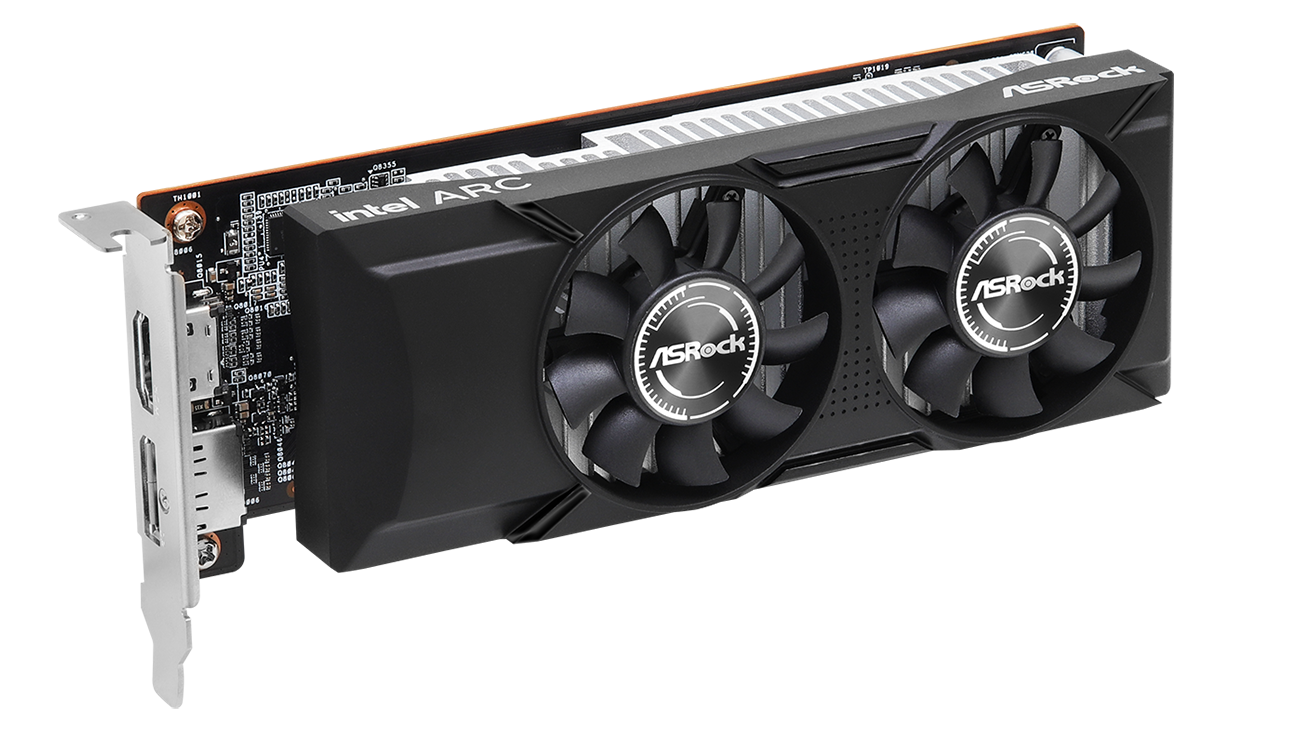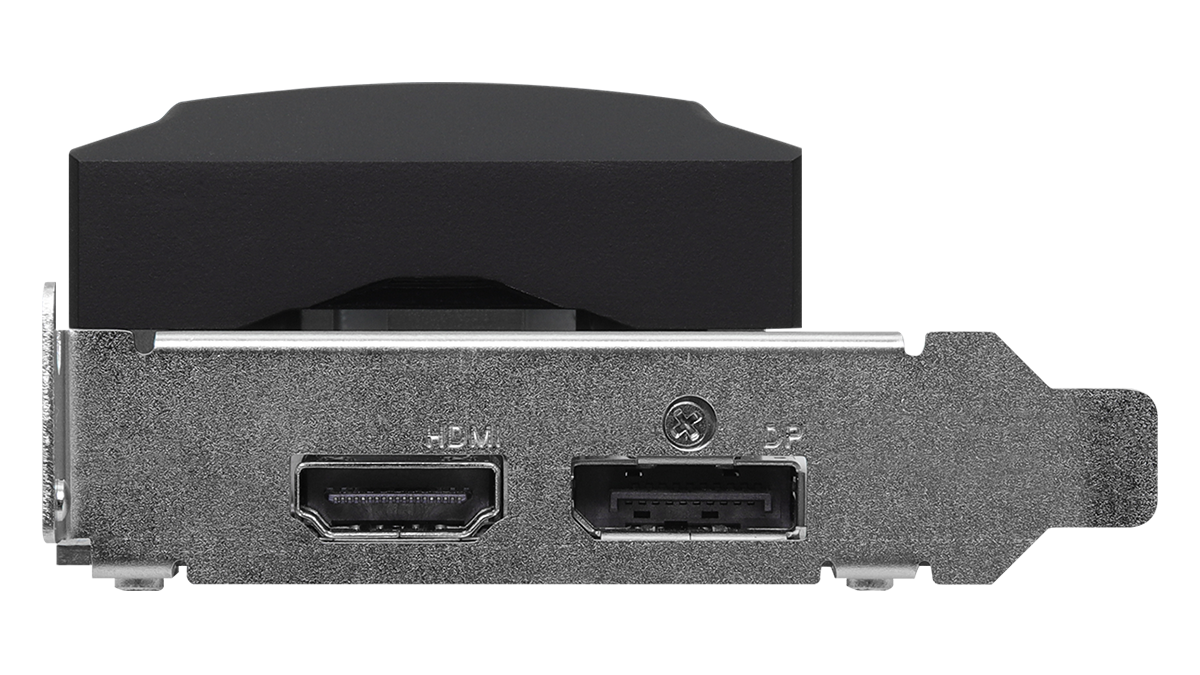Asrock's low-profile Intel Arc A380 GPU is great and all, but it should be a single-slot card
Single-slot, please!

Everyone loves a fast graphics card, but we'd rather not have to spend big money on them. Less powerful GPUs also don't need big triple-fan coolers, yet the market for compact graphics cards receives little attention.
With this underserved market in mind, Asrock has unveiled the Intel Arc A380 Low Profile 6GB card. It's a typical A380 under the hood, being powered by the ACM-G11 GPU with 1,024 stream processors clocked at 2.0GHz and 6GB of GDDR6 memory. It's not a powerhouse of a card as you'd expect at this end of the market, but it's got some key characteristics and one curious one.
It's a low-profile card with a 75W total board power, which means it doesn't need external power, instead drawing it all from the PCIe slot. While I appreciate a capable low-profile card, I feel as though Asrock missed a trick because it still takes a dual slot.
Asrock will say that its 75W TDP necessitates the use of a dual-slot cooler, and I understand that point of view, but I've tested a few low-profile cards over the years, most recently the Sapphire Pulse Radeon RX 6400. It's got a lower 53W TDP, but it also has a single-fan cooler hardly larger than a playing card, and doubling its area wouldn't be impossible, making it capable of handling a 75W TDP with ease.

Best CPU for gaming: The top chips from Intel and AMD
Best gaming motherboard: The right boards
Best graphics card: Your perfect pixel-pusher awaits
Best SSD for gaming: Get into the game ahead of the rest
Having a dual-slot cooler isn't a deal breaker, but without access to cooling data, it does seem like it's overkill, which will keep it from being used in the most compact of systems—notably those with bespoke cases that might not even have the capacity for a dual-slot card should there be something like a USB or network card taking up slots.
Think of all the older crappy off the shelf office machines out there that could be repurposed. A compact clunker Dell or HP from 10 years ago could be brought back to life with a SATA SSD and a card like the A380. And it doesn't need a change of power supply, being essentially plug and play. As long as the system isn't totally hobbled by a rubbish 10-year-old Celeron with two cores and two threads it'll do fine.
It's worth mentioning that the Arc A380 has an important feature that makes it more usable with older systems, and that's its PCIe 4.0 x8 interface. The similarly performing RX 6400 runs at a pathetic x4, which becomes a bottleneck at PCIe 3.0 x4, to say nothing of PCIe 2.0. That alone makes the A380 a good choice for older systems.
Keep up to date with the most important stories and the best deals, as picked by the PC Gamer team.

Modern and graphically intensive games will struggle to run on an A380 at 1080p without lowering image quality, but what if you want to play a bit of Fortnite or Overwatch or any one of many less demanding but popular games? The A380 is the type of card that will murder any old IGP, and do it on the cheap.
Asrock have not yet revealed a price for the Arc A380 Low Profile, but given the Asrock Arc A380 Challenger costs $120, it's pretty safe to assume the Low Profile model will land around the same price.
The A380 isn't just a gaming card. It'd make a reasonable upgrade for a living room PC, media server or even an office PC with dead graphics. I do wish it was a single-slot card though.

Chris' gaming experiences go back to the mid-nineties when he conned his parents into buying an 'educational PC' that was conveniently overpowered to play Doom and Tie Fighter. He developed a love of extreme overclocking that destroyed his savings despite the cheaper hardware on offer via his job at a PC store. To afford more LN2 he began moonlighting as a reviewer for VR-Zone before jumping the fence to work for MSI Australia. Since then, he's gone back to journalism, enthusiastically reviewing the latest and greatest components for PC & Tech Authority, PC Powerplay and currently Australian Personal Computer magazine and PC Gamer. Chris still puts far too many hours into Borderlands 3, always striving to become a more efficient killer.

